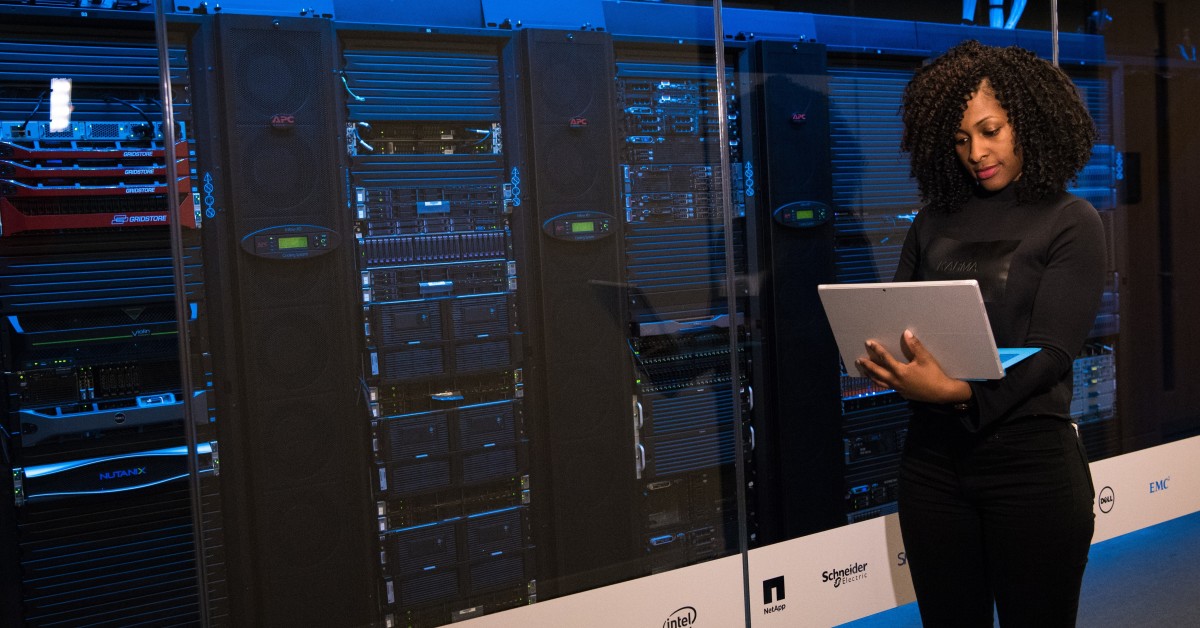
Online Cybersecurity Certificate Programs: What to Expect
Cybersecurity professionals protect online networks and the sensitive information they [...]

The COVID-19 pandemic has shifted the way we work, travel, and even apply to colleges and universities. That’s true not only for undergraduate programs but also for graduate degrees like the Master in Business Administration (MBA) and business master’s programs. The most noteworthy trend: the application volume for these programs soared to unprecedented heights during the coronavirus outbreak. What other new application trends arose, and what do they mean for prospective students?
To answer those questions, the Graduate Management Admissions Council (GMAC) compiles and releases its annual Application Trends Survey (ATS) report. Representing graduate business programs in all disciplines, the GMAC offers invaluable resources to its member schools and prospective business students through its high-quality products and services. This report aggregates information from admission officers, recruiters, and counselors to reliably identify business graduate application trends worldwide.
The MBA may be the best-known graduate business degree, but it’s hardly the only one. Other business master’s programs began trending just as high in 2020 and beyond. Read on to learn more.
The GMAC administered its 20th annual Application Trends Survey from July 8 to August 23, 2021. Survey participants included 269 business schools submitting data for 967 graduate programs; roughly half (494) were categorized as business master’s programs. The data collected from this survey help business schools forecast future trends on a global scale based on gender demographics, domestic and international demographics, work experience, program characteristics, and more.
Applications for master’s degrees in business-related fields rose in 2020, but some of those programs did not sustain the same level of growth in 2021. Prospective students interested in pursuing a graduate management education (GME) typically choose between an MBA program or the varied opportunities within a business master’s program. Survey responses included candidate interest in b-school degrees in the following areas:
Application volume growth for these degrees grew in the US from 2019 to 2020, with a Master of Finance seeing the most significant jump (from 37 percent of all programs reporting increases in application volume to 73 percent). A Master of Marketing (40 to 71 percent) and a Master in Management (46 to 76 percent) weren’t too far behind in growth. Some of this increase can be attributed to the COVID-driven idling of business professionals in 2020. That helps explain why application volume growth began to dip below pre-pandemic levels in 2021 in all but four areas: management, information technology, marketing, and supply chain management. It’s worth noting that all these programs continued to see significant growth. Even the worst-performing degree in 2021, the Master of Finance, saw an increase in the number of applications to approximately one in three programs surveyed.
Application volume growth for full-time MBA programs, one of the most sought-after business degrees, took a downturn in 2021 as well (75 percent of MBA programs reported application volume increase in 2020; in 2021, that figure was down to 54 percent). Still, it continued to exceed pre-pandemic numbers. The MBA, it seems, continues to be a perennial, not surprising given the broad spectrum of potential MBA careers.
From 2017 through 2019, growth in business master’s program applications was consistent; however, 2020 brought a huge influx of new applicants. The Application Trends Survey added data for master’s degrees in marketing and supply chain management for the 2018-19 admissions cycle. Both programs soared in application volume in 2020 and are still trending above pre-COVID numbers.
A Master of Marketing has become a hot ticket item for professionals at non-profits, small businesses, and self-employed entrepreneurs. As a result, application growth in this degree increased—by roughly the same percentage among male and female candidates and domestic and international candidates.
Supply chain represents another hot growth area. The coronavirus pandemic shone a bright light on this underappreciated business sector as consumers began to feel the direct impact on product availability and spending habits. Amid product shortages, inflation, and a new term—”shrinkflation“—the trend seems likely to continue even in the post-pandemic world. If you’ve become curious about the workings of the supply chain and its impact on the global economy, this low-profile yet high-paying occupation may become a growing career path worth exploring.
The global percentage of male and female candidates’ applications to business master’s programs stayed consistent with pre-pandemic numbers in the U.S., Europe, the United Kingdom, and Canada between 2017 and 2021. However, the Asia-Pacific region saw a jump in female candidates from 46 percent in 2019 to 55 percent in 2020 and remained at 55 percent last year.
Of the business master’s programs collected in this survey, more Master of Information Technology programs reported increased application volume from female candidates. An increased focus on cybersecurity threats and networking while working remotely has thrown a pronounced focus on information technology, driving growth in this field.
Furthermore, master’s degree programs and full-time two-year MBA programs reported growth in applications from female underrepresented minorities during the 2020-21 admissions cycle. This growth in both the gender diversity and ethnic makeup of applicants shows that the flexibility in the admissions process allowed more opportunities to diversify its applicant pool and programs. Hopefully this will eventually be reflected in the workplace.
As travel restrictions and lack of access to student visas kept many business school students and MBA students at an impasse, these factors also affected the admissions process for prospective students, including deferral rates and yield rates. Deferrals permitted accepted students to postpone their start date to a later semester, hoping that a post-COVID world would arrive, allowing the resumption of in-person study. Those deferrals, in turn, impacted the yield rates (or enrollment rates) as many students continued to weigh their options between in-person or online learning.
Due to the accessibility of online learning coupled with a less restrictive admissions process in 2020 (in some cases waiving the GMAT or GRE), the number of international candidates increased, with the most growth in applications coming from the Asia-Pacific, Europe, and Canada. In addition, as uncertainty regarding the pandemic remained top of mind, international candidates ranged between moderately and highly concerned with how it would impact their decision to pursue the path to business school, compared with domestic candidates.
Admissions committees assessing business school candidates usually prefer applicants with few years of full-time work experience for three reasons:
The impact of COVID-19 has shifted the economy and labor market, resulting in more early career professionals seeking business school programs to prepare them for future job offers or opportunities to grow within their current employer—and possibly land higher salaries. The share of overall applications to business master’s programs by candidates with less than three years of work experience jumped from 76 percent in 2019 to 82 percent in 2020.
Many learning options are available for prospective students when applying to b-school programs. Previously, evening and weekend classes were the primary accommodations for full-time working adults. Now, programs have expanded to include on-campus, online, hybrid, and flexible learning options. Application volume to online programs grew in 2021 in 46 percent of all participating programs (compared to 43 percent of on-campus and 41 percent of hybrid programs).
STEM-certified U.S. programs began to peak in 2020 with 74 percent of all programs reporting growth in applications. STEM-certified programs include Master of Data Analytics, full-time two-year MBA, Master of Finance, Master of Information Technology, and additional business master’s degrees.
Business master’s programs surged in 2020, though for some of those programs (data analytics and finance), overall application growth did not sustain the same momentum in 2021. However, management, information technology, and marketing programs maintained an average above pre-pandemic numbers, while accounting and supply chain management programs were just one percent over their 2019 average.
According to the survey, in the U.S., “half of all full-time two-year MBA programs reported growth in applications in 2021 compared to one in four in 2019.” On the other hand, as some applicants likely began to experience “Zoom fatigue” and craved a more hands-on learning experience, application volume growth to online MBA and part-time lockstep and self-paced MBA options dipped well below pre-pandemic averages.
The impact of COVID-19 was felt by applicants, admissions officers, and recruiters. When travel restrictions forced some international applicants to put their program search on hold, recruiters shifted their attention to domestic candidates.
As flexibility became a priority for prospective students due to pandemic-induced uncertainty, admission recruiters also increased budgets for online initiatives to keep up with the 2020 surge of applications. 41 percent of surveyed programs increased their budgets for online learning in 2021, up from 33 percent in 2020.
Many b-school programs continued to accommodate international and domestic candidates with flexible policies, including conducting online admission interviews, extending application deadlines, waiving application fees and admission tests, and even offering an online start with a transition to in-person.
| University and Program Name | Learn More |
|
Pepperdine University:
Online Master of Business Administration
|
|
|
Stevens Institute of Technology:
Online Master of Business Administration
|
|
|
Merrimack College:
Master of Science in Leadership
|
|
|
Merrimack College:
Master of Science in Management
|
|
|
The University of Tennessee:
Online Master of Business Administration
|
The growth of non-MBA business master’s programs has created new opportunities for all students, including international applicants and women. That’s good news for schools and students alike.
Of the prospective students surveyed, a higher percentage of domestic candidates stated that they were more willing to consider online learning or enroll in a business school closer to home. In contrast, international prospects expressed greater concern about the pandemic, yet they were more willing to move forward with original plans to pursue their GME.
As there is still a degree of hesitance related to the pandemic, programs that attempt to move full steam ahead into pre-COVID admission policies for future candidates could leave many without the option to go along for the ride. Not every business school can cater to the needs of each applicant, but they will need to at least try to accommodate their students’ increasingly varied format preferences.
There’s a surging demand for graduate business education, which will give business school and MBA graduates the competitive edge to re-enter the hot job market with more than just a new credential following their name. That’s a trend that doesn’t seem to be going away anytime soon.
Questions or feedback? Email editor@noodle.com

Cybersecurity professionals protect online networks and the sensitive information they [...]

Data scientists use data analytics, artificial intelligence. and machine learning [...]

MBA programs altered admissions policies during the COVID pandemic, resulting [...]

If you're a data science professional considering earning your master's, [...]

Most data science professionals have a PhD, but do you [...]
Categorized as: Business Administration, Management & Leadership, Business & Management